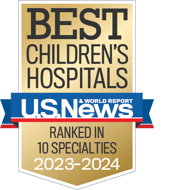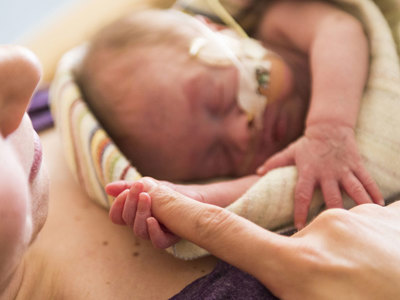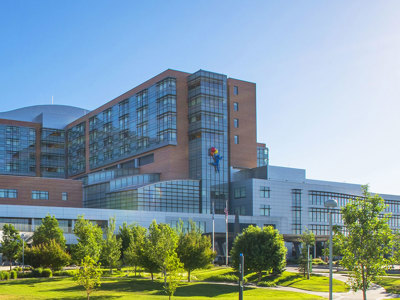- Doctors & Departments
-
Conditions & Advice
- Overview
- Conditions and Symptoms
- Symptom Checker
- Parent Resources
- The Connection Journey
- Calm A Crying Baby
- Sports Articles
- Dosage Tables
- Baby Guide
-
Your Visit
- Overview
- Prepare for Your Visit
- Your Overnight Stay
- Send a Cheer Card
- Family and Patient Resources
- Patient Cost Estimate
- Insurance and Financial Resources
- Online Bill Pay
- Medical Records
- Policies and Procedures
- We Ask Because We Care
Click to find the locations nearest youFind locations by region
See all locations -
Community
- Overview
- Addressing the Youth Mental Health Crisis
- Calendar of Events
- Child Health Advocacy
- Community Health
- Community Partners
- Corporate Relations
- Global Health
- Patient Advocacy
- Patient Stories
- Pediatric Affiliations
- Support Children’s Colorado
- Specialty Outreach Clinics
Your Support Matters
Upcoming Events
Colorado Hospitals Substance Exposed Newborn Quality Improvement Collaborative CHoSEN Conference (Hybrid)
Monday, April 29, 2024The CHoSEN Collaborative is an effort to increase consistency in...
-
Research & Innovation
- Overview
- Pediatric Clinical Trials
- Q: Pediatric Health Advances
- Discoveries and Milestones
- Training and Internships
- Academic Affiliation
- Investigator Resources
- Funding Opportunities
- Center For Innovation
- Support Our Research
- Research Areas

It starts with a Q:
For the latest cutting-edge research, innovative collaborations and remarkable discoveries in child health, read stories from across all our areas of study in Q: Advances and Answers in Pediatric Health.


Colorado Fetal Care Center
Esophageal Atresia and Tracheoesophageal Fistula
We see more, treat more and heal more kids than any other hospital in the region.

What is esophageal atresia and tracheoesophageal fistula?
Esophageal atresia (EA) is a rare birth defect in which a baby’s esophagus (the food tube) is not fully formed and does not connect to the stomach like it should. Instead, each end of the esophagus is closed.
Sometimes esophageal atresia occurs together with a condition called tracheoesophageal fistula (TEF). A TEF is an abnormal connection between the esophagus and trachea. The trachea is the tube that connects the throat to the lungs. Normally, the esophagus and trachea are not connected. If TEF occurs with EA, we refer to the condition as EA/TEF. There are different types of EA/TEF that are based on the shape of the esophagus, trachea and the connecting TEF.
What causes esophageal atresia and tracheoesophageal fistula?
During early development, the esophagus and airway initially form as a single tube that divides into two tubes in the first two months of pregnancy. If the two tubes do not separate correctly, the baby will have EA/TEF.
EA/TEF may be part of a group of defects referred to as VACTERL association – vertebral, anorectal, cardiac, tracheal, esophageal, renal and limb anomalies.
Who gets esophageal atresia and tracheoesophageal fistula?
Esophageal atresia (EA) and tracheoesophageal fistula (TEF) occur in 1 in 3,000 to 5,000 live births. Isolated tracheoesophageal fistula is much less common, occurring in only 4% to 5% of all children with TEF/EA.
Half of the patients with esophageal atresia also have other birth defects associated with a syndrome. A syndrome is a group of symptoms that occur together. These defects include cardiac (heart) malformations, which occur in 25% of cases. Some syndromes are inherited. Some cases of EA/TEF occur without any other defects and appear to be isolated.
What are the signs and symptoms of esophageal atresia and tracheoesophageal fistula?
Newborns with these conditions may be unable to feed. Some children may have trouble breathing and have episodes of vomiting coughing, gagging or choking. When doctors attempt to pass a tube into the stomach, they are not able to do so.
What tests are used to diagnose esophageal atresia and tracheoesophageal fistula?
Before birth
- Fetal ultrasound: Fetal specialists from our Colorado Fetal Care Center may diagnose esophageal atresia and tracheoesophageal fistula (EA/TEF) using a fetal ultrasound during pregnancy.
- Fetal MRI: A fetal MRI scan is a non-invasive imaging procedure that uses magnet technology to produce high-resolution images of your fetus.
After birth
- X-rays of the chest and abdomen: EA/TEF may be suspected in newborns if they cannot feed or have trouble breathing and doctors are not able to pass a tube into the baby’s stomach. Our doctors can make a diagnosis of EA by confirming the position of the tube with an X-ray. X-rays also show if there is air in the esophagus, stomach and intestines, which can help to confirm the diagnosis.
- Flexible or rigid bronchoscopy: These procedures use a scope and camera to see the inside of the airways and lungs. It is used to look for a TEF.
How do we manage esophageal atresia and tracheoesophageal fistula (EA/TEF) during pregnancy?
- Amniocentesis: If several abnormalities are seen during an ultrasound, our maternal fetal medicine specialists may recommend an amniocentesis to test for a genetic/chromosomal abnormality. Chromosomal abnormalities are present in 6 to 10% of cases. An amniocentesis a procedure that involves inserting a needle into the uterus and pregnancy sac using ultrasound guidance to remove some fluid from around the fetus. This fluid is called amniotic fluid.
- Therapy: If polyhydramnios (excessive fluid around the fetus) and preterm labor develop, you will need to take medications called tocolytics to stop the labor. You may also need to take medication called betamethasone to help mature the fetus’ lungs if a premature delivery is a concern. We may also perform a procedure called an amnioreduction to remove excess fluid from around the fetus.
- Delivery: Your newborn will likely need to be delivered in a large referral hospital (referred to as a tertiary care facility) if the diagnosis of EA/TEF is confirmed. A diagnosis of EA/TEF are not reasons to perform a cesarean section. There is also no benefit to delivering your baby prematurely to treat EA/TEF.
How is EA/TEF treated after birth?
At birth, we will position a special tube in your baby’s esophagus. This tube will permit low pressure suction and prevent fluids from being inhaled into their lungs. We will place your baby in an upright position and avoid excessive stimulation.
Your baby will also need surgery. The pediatric surgeons at Children’s Colorado are experts in the surgical repair of EA/TEF. If your baby has a TEF, we disconnect the esophagus from the trachea and close the abnormal connection between the trachea and the esophagus.
If esophageal atresia is present, we connect the two ends of the esophagus to create a working esophagus. In children with a very long gap between the ends of their esophagus (known as long-gap EA), the repair may be more complicated and require complex reconstruction, such as a gastric pull-up or a Foker-type procedure. Surgery may not be done right away. Your baby may need to be fed through an IV or a stomach tube, called a g-tube until they have surgery, and healing may take several months. After surgery, we provide specialized care in our NICU.
What types of health problems may occur after surgery?
Even after surgical repair of the esophagus, the tissue of the esophagus may be dilated or narrow, and the tissue of the airway may be floppy. This abnormal tissue can contribute to feeding trouble, swallowing trouble and chronic cough or pneumonia.
These health problems require long-term care from a variety of specialists who specialize in EA/TEF. Many children with EA/TEF require a team of medical specialists to help manage these health problems throughout childhood and adulthood. The Aerodigestive Program team at Children’s Colorado has the specialized expertise needed to treat children with EA/TEF.
A child with EA/TEF may develop any of the following:
- Poor esophageal motility: Babies may have trouble swallowing food and moving it from their mouth to their stomach. This movement of food is referred to as esophageal motility. It can result in swallowing discomfort, vomiting, regurgitation (stomach contents move back up into the esophagus and into the mouth) and food impaction (food getting stuck in the esophagus). Many children also develop oral sensory issues, which can cause them to not want to swallow or be hypersensitive to food in their mouth for a period of time. This could also lead to gagging or vomiting.
- Esophageal stricture: This condition is narrowing of the esophagus in the area where the two ends were surgically connected. Esophageal strictures are also associated with swallowing discomfort, vomiting, regurgitation and food impaction.
- Recurrent tracheoesophageal fistula: Some children may develop a recurrence of the TEF that may require a second or third repair.
- Excessive gastroesophageal reflux: Children with EA/TEF are likely to experience symptoms of increased reflux and esophagitis (irritation/inflammation) of the esophagus. Reflux is a normal event for children and adults that occurs when stomach contents move back up into the esophagus. In infants, this can occur up to 100 times per day and in adults up to 50 times per day.
Due to esophageal repair in children with EA/TEF, the protective mechanisms may not work as well and the reflux can lead to prolonged, severe irritation of the esophagus, causing the cells that line that area to become abnormal and eventually become precancerous.
Conditions that can develop include eosinophilic esophagitis or Barrett’s esophagus. Your child’s providers will watch for the development of these conditions as your child matures to provide treatment. There are no medications that stop reflux. There are only medications to treat the inflammation it causes. - Tracheomalacia: Children with EA/TEF are at increased risk of having tracheomalacia, which is a floppy airway, or an airway compressed from a large blood vessel in the chest. Tracheomalacia is associated with chronic barky cough, bronchitis and recurrent pneumonia.
- Bronchiectasis: EA/TEF is one of the causes of chronic airway scarring, also known as bronchiectasis. Bronchiectasis occurs because of airway inflammation and irritation, either because of aspiration (getting food or liquid into the airway and lungs while swallowing), tracheomalacia or both.
What type of care may my child need after surgery?
Esophageal/GI care
GI care in children with EA/TEF is focused on managing esophageal motility and esophageal stricture. A child may need:
- Diet modifications: These may include eating only small bites of food and staying upright after eating to allow gravity to get the food from the mouth into the stomach. If your child has difficulty with swallowing, it may also involve special diets through tubes in the stomach or intestine. Optimizing nutrition and growth will help your child get stronger and better quicker.
- Medications: Medications may be used to treat problems such as inflammation of the esophagus.
- Esophageal dilation or stretching: We may perform this procedure in the operating room with general anesthesia to treat esophageal stricture.
- Esophageal endoscopy: This procedure uses a flexible video camera to look at the esophagus. It may be done to manage esophageal strictures and evaluate inflammation of the esophagus, stomach and small intestine. Your child will need at least three of these procedures in their lifetime per current guidelines at 1, 10 and 18 years of age if they are otherwise doing well.
Feeding and swallowing therapy
Your child’s doctors, speech language pathologist and occupational therapist with expertise in feeding can help determine your child’s individual needs if they have trouble feeding or swallowing. Many children get a swallow study to evaluate their swallowing due to risk of aspiration of food into their lungs.
Respiratory and airway care
Children with tracheomalacia are more likely to get bronchitis and pneumonia. They may need the following:
- Mucus clearance: This treatment can include inhalers or nebulized medications to help clear out the secretions, chest physiotherapy to vibrate the secretions, steroids and antibiotics.
- Airway endoscopy: Tracheomalacia can be evaluated by airway endoscopy (flexible and rigid scopes of the airway performed by a pulmonologist and ENT specialist) and by chest CT scan or MRI imaging. When severe, tracheomalacia can make it hard to breathe or can cause a child to look blue or even stop breathing.
- Surgery: Severe tracheomalacia can be treated surgically with tracheopexy (attaching the back of the trachea to hold it open) or aortopexy (moving the large blood vessels of the chest).
- Other tests: Children and adults may have trouble exercising or may develop a form of airway scarring called bronchiectasis. To monitor and prevent these long-term complications, lung function measurements can be done annually. Chest imaging (chest CT) is recommended intermittently based on symptoms.
Why choose us for treatment of esophageal atresia and tracheoesophageal fistula
Children’s Colorado has a multidisciplinary team with specialized expertise in diagnosing and treating infants with EA/TEF. Whether a child is diagnosed while in the womb or after birth, our team is prepared to provide the specialized care that children with EA/TEF need. Because infants need surgical treatment during infancy and care for associated health problems throughout childhood, it’s vital that they get multidisciplinary care from pediatric specialists who are familiar with EA/TEF.
- The Colorado Fetal Care Center (CFCC) at Children’s Hospital Colorado is at the forefront of treatment and care for this condition. Our talented staff at Colorado Fetal Care Center will help your family through this journey to help manage your pregnancy to help ensure a healthy delivery.
- The Department of Pediatric Surgery at Children’s Colorado is home to the largest and most diversely skilled group of pediatric surgeons in the Rocky Mountain region. We perform surgery to treat a range of childhood conditions, from those that occur more commonly such as appendicitis and hernias, to rare conditions that require more complex surgical procedures.
- The Aerodigestive Program at Children’s Colorado is a collaborative group of experts in the long-term management of EA/TEF. The aerodigestive program includes pulmonologists (lung doctor), gastroenterologists, otolaryngologists (ear, nose and throat doctors), speech language pathologists, occupational therapists, dietitians, anesthesiologists, pediatric surgeons, nurses, and experts in complex coordination. We typically will see children with EA/TEF at 6 months and 12 months of age and then annually based on the published international GI and pulmonary recommendations regarding long-term care of individuals with EA/TEF.
Esophageal atresia and tracheoesophageal fistula research
The specialists in the Aerodigestive Program are leading both local and international research and quality improvement in the management of EA/TEF. The Program has also published recommendations for the multidisciplinary care of children with TEF.
- The Centers for Disease Control and Prevention provides information about esophageal atresia such as the types, causes, diagnosis and treatment.
- The National Institutes of Health, U.S. National Library of Medicine, Genetics Home Reference provides educational information about esophageal atresia and tracheoesophageal fistula such as the inheritance pattern, diagnosis, management and additional information and resources.
What is OA/TOF?
In some countries, esophagus is spelled with the letter “O” (oesophagus). Therefore, some international literature refers to oesophageal atresia with or without tracheoesophageal fistula as OA/TOF instead of EA/TEF.
Do all children with EA/TEF need multidisciplinary care?
Many children with EA/TEF will have GI, feeding and respiratory symptoms after repair, which are best treated by a team of multidisciplinary specialists. However, some children will have few symptoms. Children with EA and no TEF may be less likely to have respiratory symptoms but more likely to have GI and feeding symptoms.
In children without symptoms, a single consultation with a multidisciplinary team may help determine if chest imaging or triple endoscopy (airway and esophageal scopes) are needed to confirm if there is disease even if there are no symptoms.
Follow-up management can be tailored to the individual patient based on symptoms and any abnormalities.
Can TEF occur without EA?
TEF can occur without EA. Although rare, some children are born with a TEF and a normal esophagus. This is type of EA/TEF is often called H-type TEF because the trachea, esophagus and TEF in between the two look like the letter “H.”
Because the esophagus is connected, an H-type TEF is less likely to be identified before or at birth like other types of EA/TEF. H-type TEF can cause tracheomalacia, chronic cough and swallowing problems with aspiration (getting food or liquid into the lungs).
Children with these symptoms should discuss evaluation with their doctor. H-type TEF can be hard to diagnose, but might be seen on chest CT scan, upper gastrointestinal fluoroscopy imaging, or triple endoscopy (pulmonary, ENT and esophageal scopes).
TEF can also occur in older children or adults as a result of scarring, caustic ingestion, button batteries, damage or other injury that results in an abnormal connection between the esophagus and fistula. Repair of these TEFs can be difficult but is unlikely to cause the same long-term complications as a congenital EA with or without a TEF. It is also possible but unlikely for children with EA/TEF to develop another TEF after the initial repair.
Next steps
-
Would you like to learn more about us?
Learn more about the Colorado Fetal Care Center -
Do you have questions about this condition?
720-777-4463 -
Need ongoing care for your child?
Learn about the Aerodigestive Program

Compassionate care, wherever you are
We’re here when you need us. Telehealth appointments are available across every specialty, so you can get the high-quality care we’ve always offered from the comfort, privacy and convenience of home.
See if telehealth is right for you



 720-777-0123
720-777-0123






